Figures & data
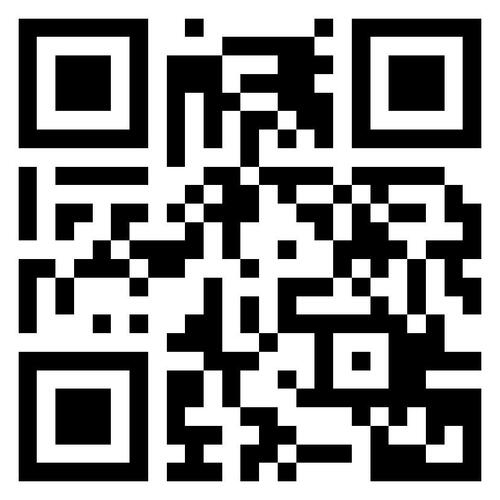
Figure 1 Refractive Amblyopia Risk Factors (ARFs) “diamond graph” AAPOS diopter cut-offs with prevalence scale under each orange axis with thickness approximating each ARF’s severity. Upper graph: 2003 AAPOS preschool guidelines indicated by red diamond. 2013 age-stratified diamond levels indicated by green (toddlers), purple (preschool) and red (Kindergarten). The lower diamonds show 2021 AAPOS ARF preK cut-offs in blue and school-aged in red attempting to reduce false positives and referral rate, while striving to detect the more severe ARFs early for which the patient cannot easily compensate with accommodation. The prevalence of risk factors is related to the area of each diamond.

Figure 2 The three leading infrared multiradial photoscreening autorefractors; Adaptica 2WIN (left), PlusoptiX A12 (center) and the Welch Allyn SPOT (right).

Table 1 Characteristics of the Three Patient Cohorts for Each of Three Autorefractors; Adaptica 2WIN, Plusoptix A12 and Welch Allyn SPOT. Q1 and Q3 are Interquartile Ranges. K-W is Kruskall-Wallis Expressed as Chi-Squared with 2 Degrees of Freedom. S.D. Is Standard Deviation the Devices Compared with Analysis of Variance (ANOVA) Represented by F Statistic. The Ages, Then the Results from Refined Retinoscopy for Cylinder, Sphere and Anisometropia Defined by Either Spherical Equivalent or Meridional Definition. Finally the Visual Acuity-Compared Refractions are Demonstrated by the Alaska Blind Child Discovery (ABCD) Composite Ellipsoid Metric.
Figure 3 Alternative definitions of anisometropia for sphero-cylinder refractions. An advantage of spherical equivalent is identical value whether plus or minus cylinder notation. The values (A) through (F) all could be utilized to calculate “anisometropia” for a sphero-cylinder refraction. Spherical equivalent anisometropia is the absolute value of (B – E); the meridional anisometropia from the more-minus is the absolute value of (A – D).
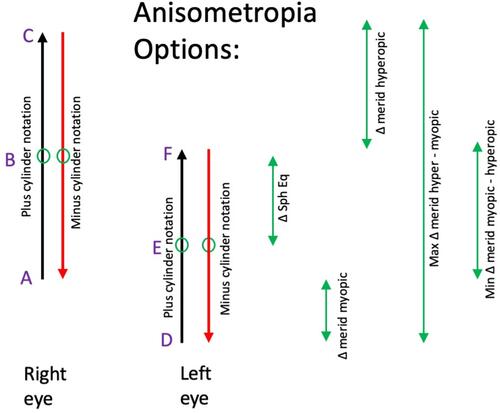
Table 2 Cohorts for the Three Autorefractors and Two Age Groups with Compared Prevalence of Disease and the Referral Rates Influenced by Choice of Specific, Sensitive or Medium Instrument Referral Criteria (IRC). For Each Device and Age, The Refractive Subcomponents Hyperopia, Anisometropia, Cylinder and Myopia the Medium Cut-off is Given with Sensitive and Specific Option Cut-Offs in Parenthesis.
Figure 4 Cohort exam details and ages. Compared non-parametric and means for age and refractive components for PlusoptiX, SPOT and 2WIN photorefractors.

Table 3 Instrument Referral Criteria from 3 Infrared Photoscreeners Targeting AAPOS 2021 Uniform Guidelines. SphEq is spherical equivalent in diopters.
Figure 5 ROC curves for three photoscreeners. Infrared multi-radial computerized autorefractors Plusoptix A12, Welch Allyn SPOT and Adaptica 2WIN performance screening for 2021 AAPOS Uniform Guidelines. Arrows point to selected “medium” instrument referral criteria refractive sub-components. In the right column, the autorefractor with the largest number of subjects (2WIN) has 2003 ROC compared with that from the 2021 AAPOS Uniform Guidelines for Amblyopia Risk Factors (Anisometropia, hyperopia and high astigmatism) and also Visually Significant Refractive Errors (moderate symmetric astigmatism and myopia).

Figure 6 Medium Instrument Referral Criteria targeting their AAPOS 2021 refractive Amblyopia Risk Factors for younger and older than 4 years of age.

Figure 7 Receiver operating characteristic (ROC) curves for separate cohorts using three autorefractive devices targeting AAPOS 2021 Uniform Guidelines Amblyopia Risk Factors and Visually Significant Refractive Errors. Regions representing “excellent”, “good”, and “fair” accuracy are delineated by blue, green, and yellow “northwest’ regions on the ROC curve.
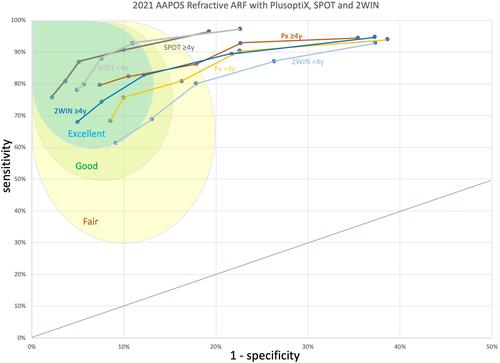
Figure 8 Refractive comparison of three photorefractors. Plusoptix A12, the Welch Allyn SPOT and the Adaptica 2WIN infrared autorefractors are compared with cycloplegic examination in children analyzed by Bland Altmann analysis of Spherical Equivalent (M), J0 and J45 vector transformation and also the ABCD Ellipsoid unitary variable shown in Box and Whisker Plot and Column demonstrating GRADE match.
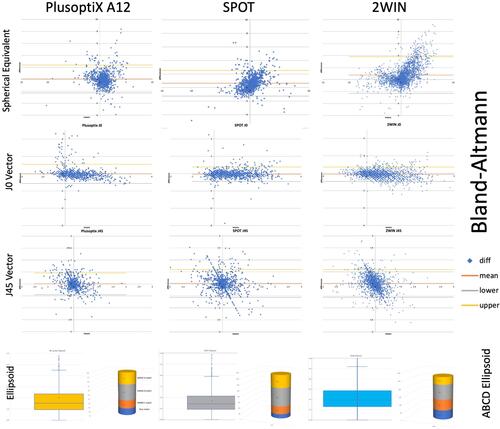
Figure 9 Ellipsoid comparison of refractive component from three infrared autorefractive devices compared to refined retinoscopy. Left shows ellipsoid composite metric (0 = perfect spectacle match, 1.0 is 1 line blue, 2.0 is 3 line defocus nd 3.0 corresponds to a 6 line defocus).
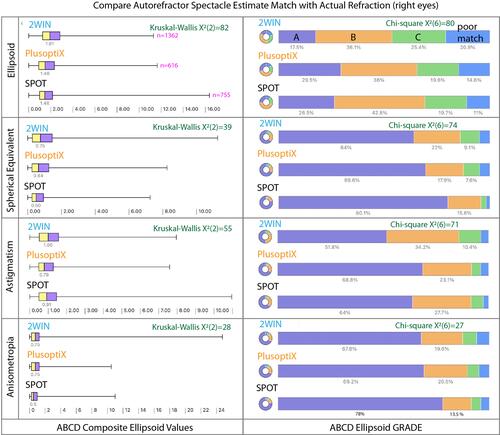
Table 4 Compared Ellipsoid Spectacle Match of 2WIN, PlusoptiX and SPOT
Table 5 2021 AAPOS Instrument-Based Vision Screening Guidelines for Amblyopia, Amblyopia Risk Factors, and Visually Significant Refractive Errors
Table 6 Responses of Different +4.50 D Hyperopic Children to Photorefract
